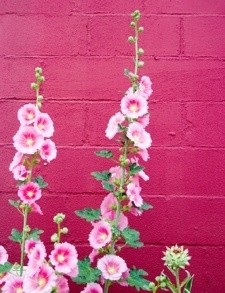Some gardeners plant only annual flowers in their gardens, while others argue that planting only perennial plants is best. Throw some biennials into the mix and things start to get really confusing; especially if you're new to gardening. In the end, most gardeners find they enjoy planting a combination of all three. The subject of perennials is large enough to warrant its own discussion, but here is what you need to know about "annuals" and "biennials".
What Exactly is an Annual?
In the garden, annual plants are considered temporary. They complete their entire life cycle (germinate, mature, and die) in a single growing season. Annuals provide gardeners with nearly instant color, and because an entire life cycle fits into one season, many bloom all season long. Many annuals are good self-sowers, and under the right conditions will pop up in the garden year after year if left alone. Examples of annuals include marigolds, petunias, and zinnias.

Two Types of Annuals
Tender Annuals: These annuals are considered very delicate. They grow vigorously in warm weather, but are easily damaged or killed by frost. In colder climates, these annuals are usually started indoors and transplanted into the garden once danger of frost has passed.
Hardy Annuals: These annuals have a higher tolerance for cold weather and frost. This means they can be sown earlier in areas with severe winters (and grown farther into the fall). They are also good candidates for winter sowing in some climates.
Examples include love-lies-bleeding, sweet alyssum, and sweet peas.
Pros and Cons of Growing Annuals
Advantages:
- Unlike perennials, most annuals have a long blooming season. They are often used to fill color gaps or bare spots that occur in between garden perennials.
- When purchased as bedding plants or started from seed, annuals offer a lower cost up front than most perennials plants.
- Because they are short-lived, annuals allow gardeners to experiment with colors and texture. If something doesn't work, it can easily be changed next season.
- Annuals are a quick and easy way to create color with pots, containers, and hanging baskets.
- There are hundreds of species of annuals to chose from, many times endless color combinations within each species.
- Annuals tend to grow more quickly and offer more blossoms per plant than most perennials.
Disadvantages:
- Annuals tend to be slightly more labor intensive than perennials. They need to be replanted every year. They also tend to be heavier feeders and their flowering time means constant deadheading.
- Replacing annuals is a yearly expense and may not be the most economical choice in the long run.
- Most annuals are non-native.
- For that reason, beneficial insects and garden pollinators may not recognize them as food and may be more difficult to attract.
What Exactly is a Biennial?
The life cycle of biennial plants falls somewhere in the middle of the road between annuals and perennials. Technically, a biennial completes its life cycle in two growing seasons. The first year is spent building up foliage and establishing a strong, fleshy root system to store food over winter. In the second year they come back, bloom, and then set seed and die. Examples of biennials include many foxgloves, Canterbury bells, and hollyhock (also considered a short-lived perennial).

Pros and Cons of Growing Biennials
Advantages:
- Biennials tend to have an good tolerance for frost and cold weather.
- These plants tend to self sow very readily, which means that they will provide you with a constant supply of plants and you don't have to worry about replanting them.
Disadvantages:
- The life cycle of a biennial can be somewhat unpredictable. Instead of two years, some complete their entire life cycle in one year, and others take three.
- Biennials require patience. Gardeners usually have to wait until year two before being rewarded with flowers.

